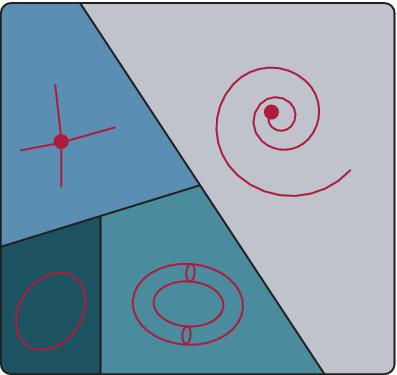当前位置:
X-MOL 学术
›
WIREs Mech. Dis.
›
论文详情
Our official English website, www.x-mol.net, welcomes your feedback! (Note: you will need to create a separate account there.)
Theory of cell fate.
WIREs Mechanisms of Disease ( IF 3.1 ) Pub Date : 2019-12-12 , DOI: 10.1002/wsbm.1471 Michael J Casey 1, 2 , Patrick S Stumpf 2, 3 , Ben D MacArthur 1, 2, 3
WIREs Mechanisms of Disease ( IF 3.1 ) Pub Date : 2019-12-12 , DOI: 10.1002/wsbm.1471 Michael J Casey 1, 2 , Patrick S Stumpf 2, 3 , Ben D MacArthur 1, 2, 3
Affiliation

|
Cell fate decisions are controlled by complex intracellular molecular regulatory networks. Studies increasingly reveal the scale of this complexity: not only do cell fate regulatory networks contain numerous positive and negative feedback loops, they also involve a range of different kinds of nonlinear protein–protein and protein–DNA interactions. This inherent complexity and nonlinearity makes cell fate decisions hard to understand using experiment and intuition alone. In this primer, we will outline how tools from mathematics can be used to understand cell fate dynamics. We will briefly introduce some notions from dynamical systems theory, and discuss how they offer a framework within which to build a rigorous understanding of what we mean by a cell “fate”, and how cells change fate. We will also outline how modern experiments, particularly high‐throughput single‐cell experiments, are enabling us to test and explore the limits of these ideas, and build a better understanding of cellular identities.
中文翻译:

细胞命运理论。
细胞命运决定由复杂的细胞内分子调控网络控制。研究越来越多地揭示了这种复杂性的规模:细胞命运调控网络不仅包含许多正反馈环和负反馈环,还涉及一系列不同类型的非线性蛋白质-蛋白质和蛋白质-DNA 相互作用。这种固有的复杂性和非线性使得仅使用实验和直觉很难理解细胞命运决定。在本入门书中,我们将概述如何使用数学工具来理解细胞命运动态。我们将简要介绍动力系统理论中的一些概念,并讨论它们如何提供一个框架,在该框架内建立对细胞“命运”含义以及细胞如何改变命运的严格理解。我们还将概述现代实验,特别是高通量单细胞实验,如何使我们能够测试和探索这些想法的局限性,并更好地理解细胞身份。
更新日期:2019-12-12
中文翻译:

细胞命运理论。
细胞命运决定由复杂的细胞内分子调控网络控制。研究越来越多地揭示了这种复杂性的规模:细胞命运调控网络不仅包含许多正反馈环和负反馈环,还涉及一系列不同类型的非线性蛋白质-蛋白质和蛋白质-DNA 相互作用。这种固有的复杂性和非线性使得仅使用实验和直觉很难理解细胞命运决定。在本入门书中,我们将概述如何使用数学工具来理解细胞命运动态。我们将简要介绍动力系统理论中的一些概念,并讨论它们如何提供一个框架,在该框架内建立对细胞“命运”含义以及细胞如何改变命运的严格理解。我们还将概述现代实验,特别是高通量单细胞实验,如何使我们能够测试和探索这些想法的局限性,并更好地理解细胞身份。



























 京公网安备 11010802027423号
京公网安备 11010802027423号